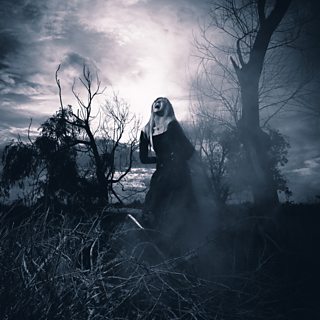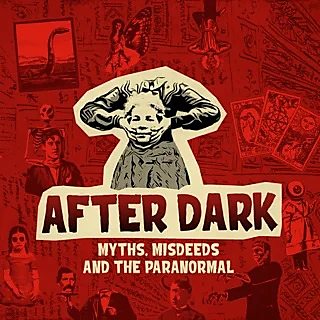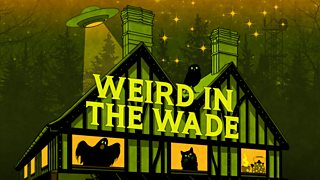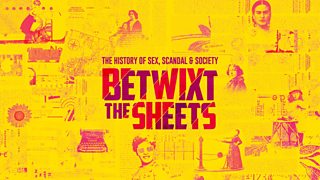Five Screamingly Good Facts about Banshees in Ireland
In this episode of After Dark: Myths, Misdeeds & the Paranormal, Anthony Delaney, Maddy Pelling and Siobhán McSweeney (Derry Girls) explore the mysterious the story of Charles Bunworth, who died in 1772.
The supposed circumstances of Bunworth's death were documented by his great great grandson, Thomas Crofton Croker, in Fairy Legends and Traditions of the South of Ireland in 1825.
In it, Crofton Croker assures his readers that: “There are still living, credible witnesses who can declare the authenticity of what follows, and who can be produced to attest most, if not all, of the following particulars.”
So what were these particulars, and what was so notable about them?
According to his great great grandson, his passing had been foretold by a haggard old lady sitting under a tree near his house almost a week beforehand. She was believed to be a banshee.
Here are some of the things we learned about these mysterious spirits.
In Irish folklore, the banshee heralds the death of a family member.
They do this usually by shrieking, or “keening”. Crofton Croker explains to his readers: “Keening is the Irish term for a wild song of lamentation poured forth over a dead body, by certain mourners employed for the purpose.”

Banshees are unique to Ireland.
Bunworth's story occurs in 1772, during a period of global upheaval, Anthony explains. “In Ireland, we had a monarch who is the British monarch on the throne. It's George III We are seeing a lot of unrest around Europe and in America, which will inevitably lead to revolutions there. There is then an arising of the United Irishman in Ireland in 1798 which ultimately fails. But this is the kind of world in which Bunworth has been living, which goes on to inform Ireland in the 19th century, which sees the beginning of the Gaelic Revival. And there's this reconnection to what Irishness means in the context of the British Empire. The Banshee fits into these stories in its own unique way.”
The banshee is linked to Tuatha Dé Danann – a race of fairies in Irish mythology.
“Banshee” itself means “fairy woman” in Gaelic. As Anthony explains: “The Tuatha Dé Danann is basically this kind of pre-Christian fairy folk that surreptitiously ruled Ireland. It was folkloric and religious in its own sense. And it was this kind of army of fairy people who were manipulating the climate, who were manipulating all different types of things. And the Banshee comes from that mythology.”
Only certain families could hear the banshee.
Not everyone is supposed to hear her cries, Anthony says. “The legend went that only certain families could hear her. If you have any of these surnames, try not to get too freaked out: If you're a McCarthy, a McGrath, an O'Neill, an O'Reilly, an O'Sullivan, an O'Riordan, O’Flaherty – essentially any families that begin with ‘O’ or ‘Mc’ – these are the people who she follows around.”
Old women foretelling death pop up in many folkloric traditions.
While the banshee is specific to Ireland, the archetype exists in various cultures. For example, the story of the Chained Oak in Staffordshire, where it’s said an earl who owned the land denies help to an old woman on the road. She tells him: when the branches fall from the oak tree, members of your family will die. And they do. “So the guy who owns the tree starts to chain it up,” says Maddy. “I think there's something about the history of place and the landscape and a kind of wildness that brings out an anxiety in people.”
For more discussion on banshees, you can listen to After Dark: Myths, Misdeeds & the Paranormal on ÃÛÑ¿´«Ã½ Sounds.
-
![]()
History's Youngest Heroes
Derry Girls star Nicola Coughlan and Helena Bonham Carter shine a light on extraordinary people from history.
-
![]()
Weird in the Wade
Weird in the Wade brings you true tales that are weird, wonderful and a little off kilter.
-
![]()
Dan Snow's History Hit
Historian Dan Snow investigates the 'how' and 'why' of history's defining moments.
-
![]()
Betwixt the Sheets
Sex historian Kate Lister uncovers stories that’d make your history teacher blush.





